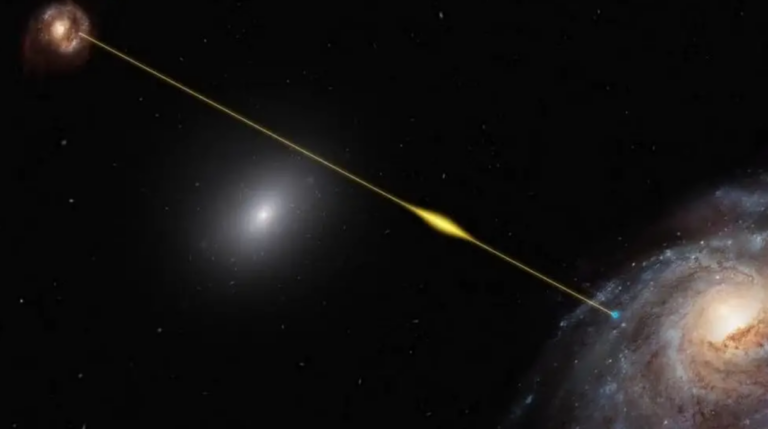Astronomers have successfully traced yet another deep space signal to the farthest reaches of the universe.
These signals described as ‘brief and powerful’ have been detected by astronomers since 2007 using radio telescopes from different regions of space. Only in the recent year, scientists were actually able to locate the source of the first non-repeating signal and then another group of scientists followed and located nine more signals in just two days. It is still a mystery as to what causes these “fast radio bursts,” but more information about them has been discovered.
A team at CalTech’s Owens Valley Radio Observatory in California has recently identified a new, faint non-repeating signal FRB 190523 and has managed to pinpoint that it originates from a galaxy that is 8 billion light years away.
Various hypotheses have been floated to account for FRBs including mighty neutron star, a possibility of alien existence.
Soon after the announcement by the Australian Square Kilometre Array Pathfinder team on the detection of the burst originating 4 billion light-years away from a galaxy and not repeating, an accelerated article preview of the OVRO discovery was put up on the Nature journal website.
Furthering the intrigue, a Russian observatory detected nine MORE FRBs, including a total repeater. The follow-up FRBs are of much interest because they are rare than the other types and can be traced easily to their source galaxies.
However, this being said, the characteristic of FRBs has remained one of the biggest mysteries in the field of space sciences, regardless of numerous announcements within a week. Here the CalTech team offered some more information and associated FRB 190523 with a galaxy similar to our Milky Way but not a dwarf galaxy as all the subsequent bursts starting with the first repeating burst, FRB 121102.
Another scientist Vikram Ravi from CalTech also states that the discovery means that any galaxy for instance our Milky Way is capable of making a FRB. He also states that there is a possibility of improving the capabilities of radio telescope arrays such as the Deep Synoptic Array to detect and monitor other FRBs in the future.
Ravi further continues to explain that the identification of FRB 190523 to a galaxy similar to Milky Way has helped to bring some level of understanding towards the FRBs, which remains one of the biggest mysteries in space science. Thanks to the constant development in radio telescopes science, one can one day explain the mysteries of such phenomenon.
Do not forget to share your opinion with us to provide you with the best posts !




0 Comments